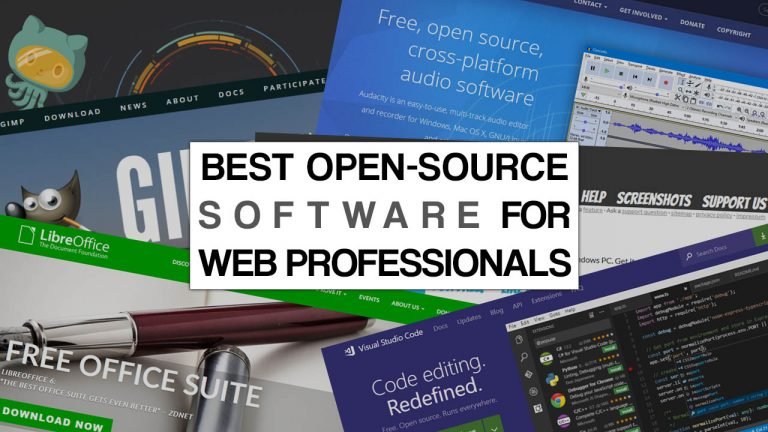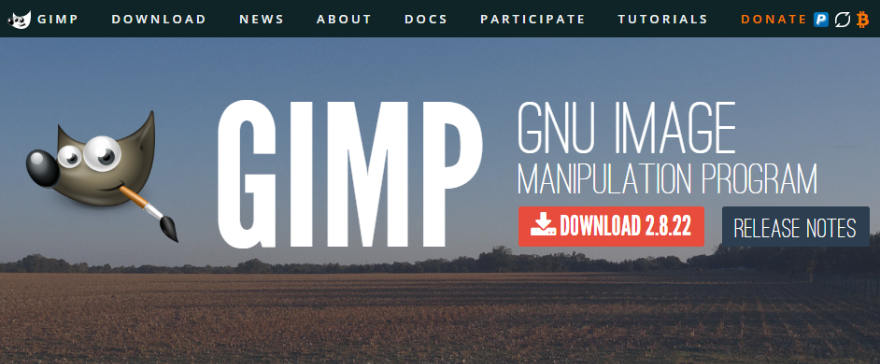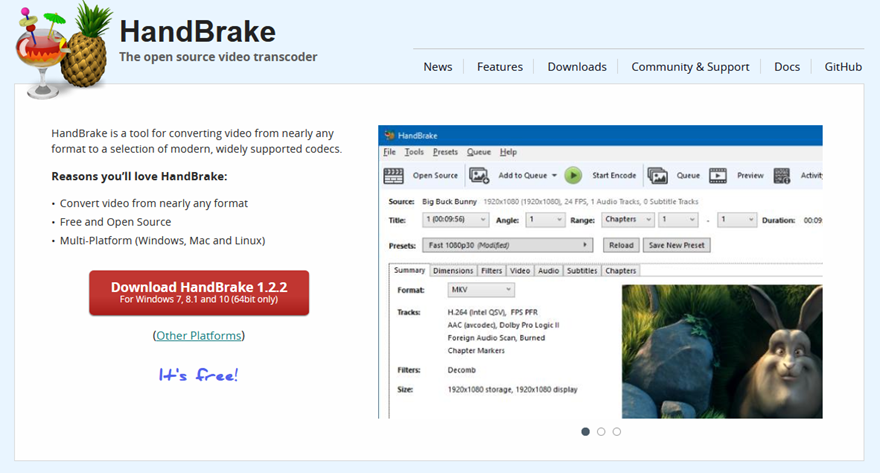
Being a web professional means your day is filled with software that does creative things from cutting screencaps into small pieces to streaming videos on a secondary monitor. Because of the huge number of apps we use over the course of a work-week, the best move we can make is using as much open-source software as possible. Mainly, because it’s free to use, but also because it has no often-included harmful malware and spyware corporate software bundles in.
Thanks to awesome communities like GitHub, the quality and quantity of open-source apps has increased dramatically over the years to the point where right now, you can run almost entirely off open-source software.
GIMP

GIMP is an open-source alternative to well known image editing software Adobe Photoshop. Powerful enough for heavy design use by professionals, GIMP packs a lot of power in its open-source framework. While some consider the UI hard to use, the fact of the matter is that it’s simply different from what many users and professionals are used to — the Adobe or Affinity standards. If you’re web pro who needs image editing or manipulation that Preview or MS Paint can’t handle, GIMP can save you a lot of money. It can do generally everything what Adobe Photoshop can do, but without spending a single penny.
More open-source image editing you must try: Paint.NET and Inkscape are more than worth your consideration as well.
Blender

Blender is probably the most important piece of open-source software for the 3D artists, freelance animators, and video creators. It is close to being the standard in the field and can stand up in pretty much every way to the corporate software it competes with. Licensed as GNU, Blender is free in the most liberal way possible. You can take the code and do whatever you want to with it, package it back up, and it’s yours. The same for your work created with Blender, too. There can be a learning curve to Blender but the internet is rife with tutorials and documentation videos that can help ease you into creation, no matter your experience level with this kind of software.
Firefox

Mozilla Firefox comes in two versions: standard and developer editions. Nowadays, Google Chrome is the standard and well liked web browser, displaying the vast majority of internet content. Firefox, however, is in second place for good reasons. Firefox is fast, lightweight, and has a focus on privacy of user that Google Chrome simply can’t compete with. The dev tools are robust (especially in the dev edition), and the extension marketplace is every bit as useful very much like Chrome’s. You might run into hurdles occasionally with websites being Chrome-exclusive, but in that case, you also have the option of the open-source Chromium.
KeePass

You might use LastPass or 1Password already, but take a look at KeePass if you want a stable, open-source (OSI certified), password manager that you can use without actually having to install anything. Fully secured using encryption keys that you keep with you, using SHA-256 encryption, KeePass is worth using if you don’t want to have to install apps and extensions or keep your passwords in the cloud. You’re the one who controls KeePass, and that means a lot in the world of digital security.
Audacity

Audacity is the gold standard of open-source DAWs (digital audio workstations) from years. While there are other audio related apps, platforms, and programs that many people use, the most highly recommended and downloaded is Audacity. That’s because it’s easy and accessible. It’s also very powerful. If you’re a web professional who has a podcast on the side, needs to edit some audio for your client, or anything that doesn’t require a mixing board for, Audacity is very likely to be all you need. It can not compete with powerful as Adobe Audition, Apple Logic Pro, or Avid Pro Tools, Audacity more than serves its purpose for the vast majority of users.
LibreOffice

Take the already-great OpenOffice software and make it even better and more user-friendly, and you have LibreOffice. A direct competitor with MS Office, Libre includes correlatives to Word (Writer), PowerPoint (Impress), Excel (Calc), Access (Base), and Publisher (Draw), as well as a charts creator and formulas editor to make your task easier. Many people have migrated to Google Drive as an office suite already, but if you want a powerful office suite that runs on your local system and has all the bells and whistles you’re used to in MS Office, LibreOffice is your best bet.
Visual Studio Code

VS Code is an open-source and a powerful code editor that is backed by Microsoft, but developed by the community. Extensions are now abundant, and you will have a difficult time to find a feature or add-on that isn’t available for it. Since its debut, VS Code has quickly become favorite code editor for many professional developers. Simply put: if you do text editing or coding, Visual Studio Code needs to be on your local computer.
Atom

If you’re aware of Microsoft as an open-source curator, Atom might be the next-best-thing for you. Take everything we told you about Visual Studio Code, take away the Microsoft, and you kind of have Atom. It’s a little heavier and slower than Visual Studio Code on occasion, but the extensibility it has may even exceed Microsoft’s entry. Now, Atom started as a GitHub-supported project, and GitHub is now owned by Microsoft. But the Atom project is still going on its own, and the community there is dedicated to making this one of the best open-source software apps available online.
HandBrake

HandBrake is a great software and has been around for years. And we’ve used it for years. Because when it comes down to video transcoders, HandBrake might just be the simplest and quickest to get it done for you. Need an MP4 to be a MOV or any other format? Easy. The app is also an easy way to encode video and break it into chapters for physical media like DVD and Blu-ray. It’s not a replacement for Adobe Premiere or its other competitors, but keeping this one around for those moments when a client needs a video to be something else than the file they provide, HandBrake is a lifesaver.
Greenshot

SnagIt is one of your most-used tools and everyone know what it is . Greenshot is a great open-source alternative to SnagIt, and it’s pretty solid on its own. Screen capture, annotation, and so on is very easy and just a few button presses and clicks away. Crop, paste, point, and number your tutorials with this open-source software. It’s a lot better than simply pressing Print Screen and editing image in Paint.
Conclusion
We have tried to put together a list of the best open source software to make your work easy and same your precious time. There are just too many that are too good to pick. But we think these will make your work life simpler, cheaper, and overall it will definitely save you from spyware and unwanted lines of code.
